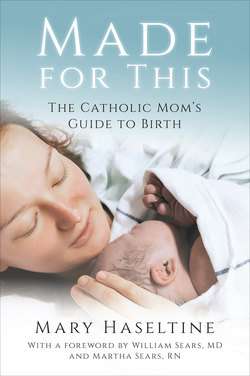Читать книгу Made for This - Mary Haseltine - Страница 18
ОглавлениеChoosing Where to Birth
“Be strong and of good courage; be not frightened, neither be dismayed; for the Lord your God is with you wherever you go.”— Joshua 1:9
Another important decision you will need to make about your birth is where you will have your baby. This will be limited to what is available in your area and, of course, is closely connected to your choice of provider. You may love your provider and want to birth at home but find that your provider only attend births at a hospital. Or you may really want to be at the hospital, but your provider only attends births at home. You may want the in-between option of a birthing center, but there are none in your area or your provider doesn’t attend there. Or perhaps your choice is affected by an at-risk situation, atypical circumstance, history, or finances. For many women in many areas, the choices are limited. However, it’s important for you to know all the options you do have so you can make the best decision for you.
Ideally, your chosen place of birth and provider will match up well. When that doesn’t happen, you may need to decide which is a higher priority for you — birthing in the place you are most comfortable and feel most at peace, or birthing with the person with whom you are most comfortable and about whom you feel most peace. Some women know as soon as they have a positive pregnancy test the place or provider they want to use, and they work their other decisions around that first decision. Others may yet have to decide on both and find a combination of the two that makes the most sense given their unique circumstances.
Let’s go over options currently available for most women.
Birth at Home
Birth at home used to be the norm for all women. Before the early twentieth century, a woman went into labor, the local midwife or doctor was called, and the mother gave birth in her home. It wasn’t until the advent of hospitals and the urbanization of the industrial age about 100 years ago that women began to be expected to leave their home and go to a hospital to birth. For several decades birth at home in the United States became almost nonexistent, as the hospital model became the expected norm and government regulations and lobbying made it almost impossible for doctors and midwives to practice at home.
The last few decades, however, have seen a resurgence in women choosing to birth at home for a variety of reasons, the rate nearly doubling in the last decade. In 2014, 1.36 percent of women in the United States had an out-of-hospital birth, and in some states the rate was as high as 6 percent.66 As the cesarean rates have risen and maternal and infant mortality rates in the United States remain among the highest in the industrialized world, many researchers, doctors, and women are wondering if a woman experiencing a normal pregnancy and labor is actually helped or hindered by being at the hospital. While moving to the hospital made birth safer in some ways, the management of all births as emergencies holds its own set of risks for a woman and baby.
In the United States, a home birth is typically attended by a certified professional midwife (CPM) or certified nurse midwife (CNM), though there are some medical doctors still who attend births at home.
At home a woman is freer to labor as she wants, not as directed by hospital protocol or expectations. She can move as she wants, eat when she wants, shower if she wants, and have whomever she wants present. There is no rush to the hospital, and the provider comes to her. At home she may feel more relaxed and comfortable, which has a profound effect on the body’s ability to open and birth. Home-birth providers will be less inclined to recommend artificial induction and are more comfortable with letting the woman’s body work the way it needs to. They typically are used to a woman choosing her own labor and pushing positions and work around her rather than expecting her to labor as they decide. They often are much more experienced in helping a baby come in the most natural way possible, with the least intervention possible, and birthing in water can be an option.
